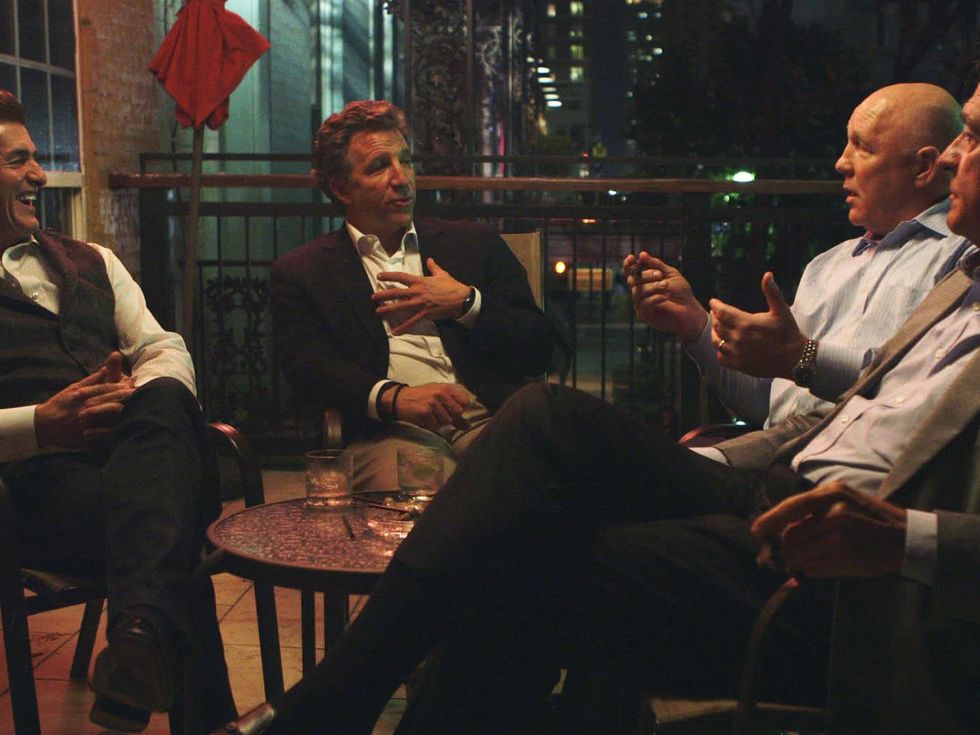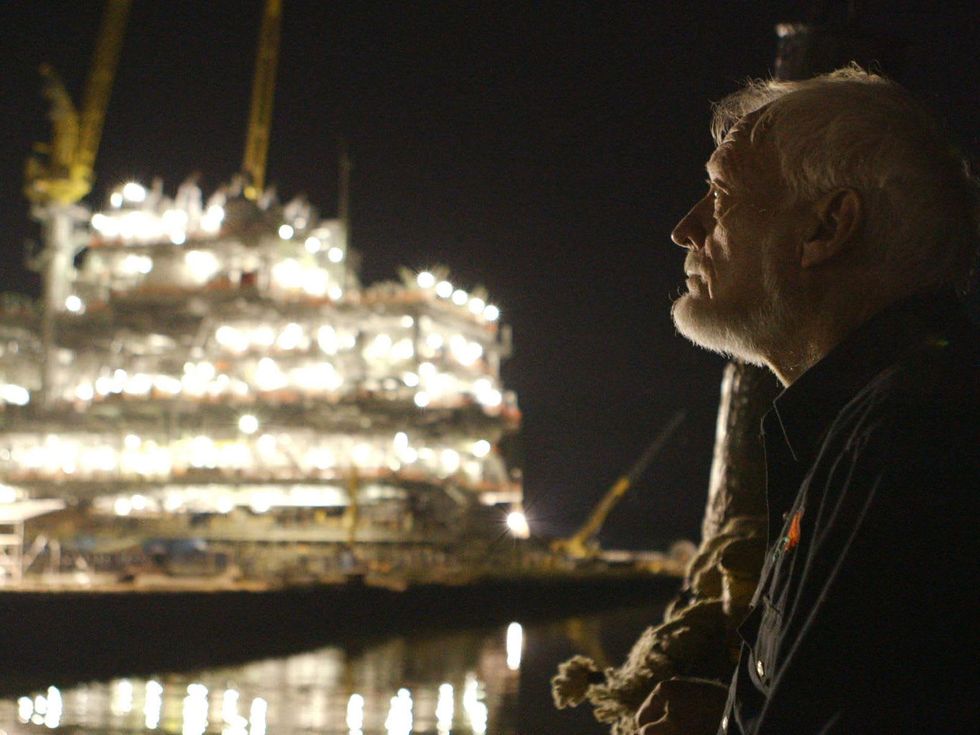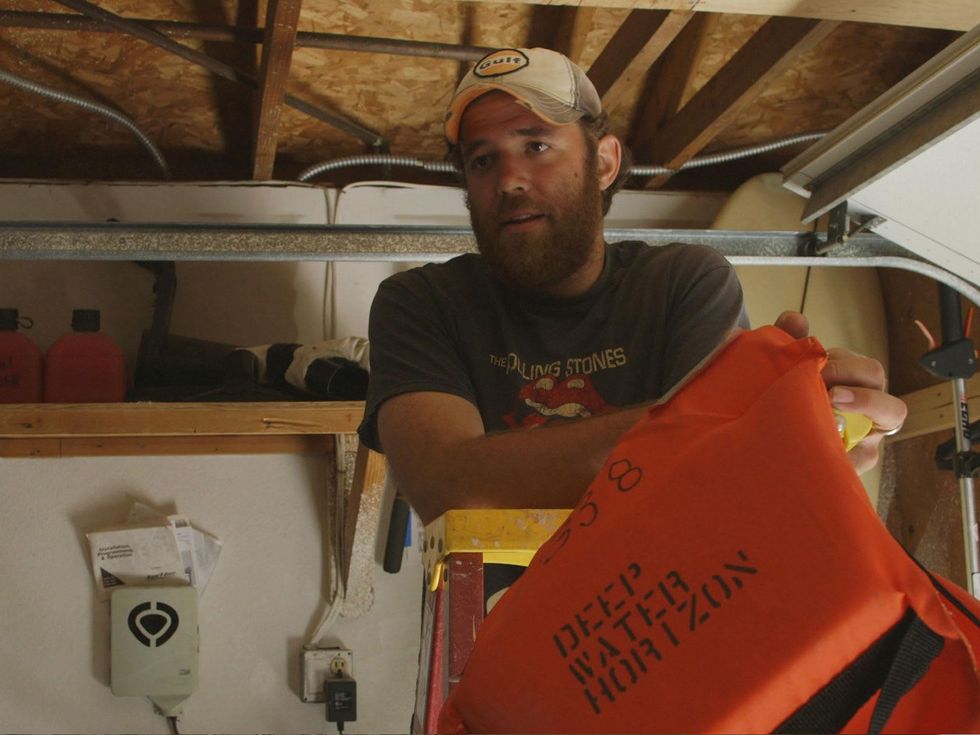Deepwater Horizon Examined
Documenting the Invisible: Filmmaker tries to make sense out of Deepwater Horizon disaster
On April 20, 2010 what began with an explosion on the offshore oil rig Deepwater Horizon that killed 11 members of the crew became one of the largest environmental disasters in U.S history. The oil continued to flow into the Gulf of Mexico for months after the initial explosion, yet the story continues today, with just last week the Supreme Court refusing to review the BP settlement.
The Great Invisible, a new documentary film by Peabody Award-winning director Margaret Brown, attempts to chronicle the events and Gulf Coast lives forever altered by the disaster. This weekend Brown brings the film, which won the SXSW Grand Jury Prize for Documentary, to town for its Houston debut. I recently had a chance to speak with her about the project and how Houston fits into this ongoing saga.
CultureMap: How soon after the Deepwater Horizon explosion did you decide you wanted to document what was happening?
Margaret Brown: It was about three weeks afterwards. I grew up in Alabama, and my father, who has a house on the water, kept sending me pictures of the clean up. They were shocking photographs. I am used to seeing the house as a pretty pristine place in Alabama and it was over run with workers and boom. It was very upsetting. I started talking to people and kept hearing the hopelessness in their voices. At the time, I was making a whole different movie, but I decided to drop that film and make this one.
CM: When did you complete the film?
MB: I finished right before SXSW this year, March of 2014.
CM: So at what point in the project did you realize it was going to take years to fully chronicle this story?
MB: It’s funny that you ask that because I didn’t realize right away the emotional toll that it would be making a project for so long.
What I thought the project was changed as I was making it. I thought I was just going to make it about where I grew up in Alabama, and I would go back every few months and document what was going on. But about a year and a half in, I got interested in how globally we’re all connected to oil. I wanted to make the film bigger and have it also relate to the oil industry and people who were on the rig that day, not just be about the people in Alabama. It became something I was making all the time.
CM: So with your Gulf Coast roots, this started as a personal story for you, but it became much more?
MB: I feel like it stayed personal, but it got to be where I wasn’t interested in just that story. I wanted it to be character driven, but I realized it was a bigger story about how we’re all connected to oil and what happens when you fill up your car and that risk that we’re connected to.
CM: I would imagine for a story this vast, with all these lives affected, and then getting into the nature of oil in all our lives, that one of the biggest challenges would be to find some coherent narrative for a film audience.
MB: Yes, absolutely.
CM: Were there ways that you decided to do that so it would be comprehensible to the viewer.
MB: The film is one connection that leads to another connection. It’s a web of a film. It’s an ensemble piece, and it does have a three act structure, but it doesn’t follow one character on a journey. It’s a web of how we’re all connected to oil.
There are three or four mains characters that take us through the story. There’s a narrative progression, but it’s not one character’s story.
CM: Tell me about a few of those voices that help to carry the audience through the film.
MB: We meet Doug Brown who is the head engineer on the Deepwater Horizon. He was there when it was being built in Korea and he was there when it sunk. He also gave me never-before-seen footage on Deepwater Horizon that he made for his family about two years before the explosion. Through the footage you get the feel of what life on a rig is like. He leads us through that world. It’s pretty powerful stuff because you can feel the danger.
There’s another character named Roosevelt Harris from Bayou La Batre, Alabama, who volunteers for a soup kitchen. He brings food to all these oyster workers who are out of work. He leads us through the world of seafood workers along the Alabama Coast and how they’re being impacted and coming together as a community, or not as the case may be.
Then there’s Bob Cavnar, who’s going to be at one of the Q&As. He’s worked in the oil industry for about 30 years. He owns different oil companies and wrote a book on the Deepwater Horizon.
CM: How does Houston fit into the overall story and the film?
MB: We follow three cities in the movie, Houston, Bayou La Batre, and Morgan City, Louisiana. We are in Houston because that’s where the oil industry is headquartered for the world. Houston plays a huge part, about a third of film.
CM: The impact of Deepwater is still being felt, so was there a moment when you just had to tell yourself: This is it. I have to stop filming, I’ve got to end it at some point.
MB: Actually, it was a Houston thing that ended it. There’s an oil executive named Steve Wyatt, who I filmed in the beginning of the movie and I’ve stayed friends with him and we’ve talked over the years.
Less than a year ago, I had a rough screening in New York, where I talked to one of my producer about what might be missing from the film. We realized what was missing was another scene with these oil executives.
I called up Steve and I said “Americans don’t really understand what oil is and what you guys understand about it.” He knew my film was also about the United States relationship to energy. And I asked, “Can we do a scene where you guys talk about that from your perspective?” We filmed this scene with Steve and his friends and it was an amazing scene. Then I knew I was done, that all the pieces of the film were there.
----------------------
Margaret Brown will discuss the movie after the 5 p.m. and 7 p.m. screenings on Sunday (Dec. 14) at the River Oaks Theatre and conduct a question and answer with several subjects from the film, including oil executives Bob Cavnar and Steve Wyatt; Keith Jones, whose father died on the rig; and Stephen Stone, a roustabout on the rig and his wife, Sara.






